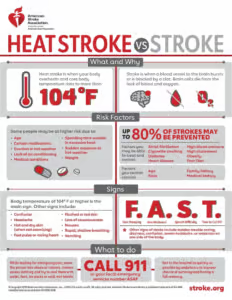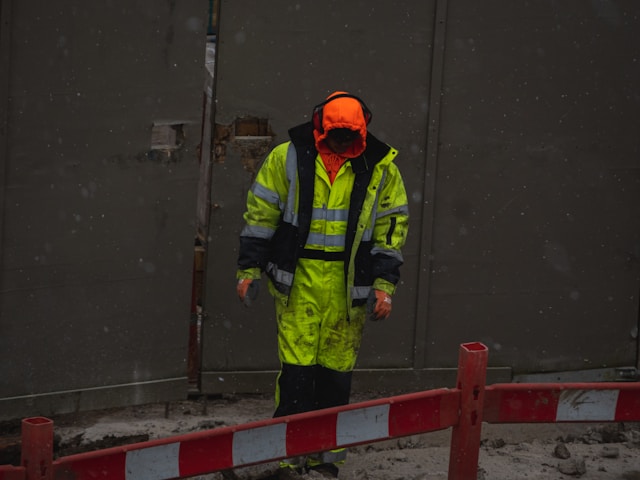What is the difference between a heat stroke and a stroke? Learning the symptoms of each could save your life. Heat stroke is a life-threatening medical emergency in which the body overheats due to excessive exertion or high environmental temperatures, causing the core body temperature to rise to 104°F or higher. A stroke is defined as an interruption to the flow of blood to the brain.
Types of strokes
Hemorrhagic: caused by a blockage, like a clot in a blood vessel
Ischemic: caused by bleeding due to a ruptured blood vessel
The three types of heat strokes
Exertional heat stroke: caused by strenuous physical activity in hot and humid conditions
Non-exertional heat stroke: caused by the body’s ability to cool itself being overwhelmed by environmental heat.
Vehicular heatstroke: most commonly found in kids, caused by being trapped in a vehicle under extreme heat conditions.
Who is at risk for heat stroke?
Age: Older adults aged 65+, pregnant individuals, kids
Sex: Female
Ethnicity: Between 2005 and 2015, emergency department visits for heat-related causes increased the most by African Americans at 67%, followed closely by 63% for Hispanics, and 53% for Asian Americans. Just 27% of white individuals visited the emergency room during that same period, according to a report in the Wilderness and Environmental Medicine journal.
Health conditions: chronic conditions such as heart disease, obesity, and diabetes.
How to tell the difference between a heat stroke and a stroke?
Symptoms of a stroke
- Numbness or weakness in one side of the body
- Arm weakness
- Trouble speaking
- Vision problems
- Difficulty maintaining balance
- Severe headache
Symptoms of heat stroke
- Fever of 104°F or greater
- Hot and dry skin
- Fainting
- Changes in mental status, such as confusion
- Nausea and vomiting
- Flushed skin
- Coma
- Seizures
- Rapid breathing

What to do if somebody is showing symptoms?
Stroke: When somebody is suspected to have a stroke, it is essential to act F.A.S.T.
F.A.S.T. stands for facial drooping, arm weakness, speech difficulties, and time to call 911.
To test for facial drooping, ask the person to smile and see if one side of the face droops.
To test arm weakness, ask the person to raise both arms and see if one arm drifts down.
To test for speech difficulties, ask them to repeat a simple phrase and see if they can say the phrase clearly.
Finally, if someone is showing one or more of these symptoms, call 911 immediately.
It is important to keep F.A.S.T. in mind, as the CDC states that only 38% of American adults knew to call 911 when somebody was showing signs of a stroke.
Heat Stroke: Call 911 if the person is experiencing symptoms of heat stroke.
Then, you can move the person away from the heat immediately and remove any excess clothing they may be wearing. You can also cool the person with whatever is available in the meantime. This can include placing ice packs on the person, spraying them with a hose, and immersing the person in a cool tub of water. If the person loses consciousness, begin CPR.



